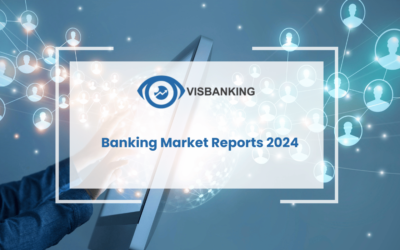Your Guide to Making Informed Choices
Estimated reading time: 17 minutes
I. Introduction
Banking institutions are a fundamental part of the financial system in the USA. They provide essential services, such as loans, deposits, and investment opportunities, that help individuals and businesses manage their money. The importance of banking institutions cannot be overstated, as they enable financial transactions, support economic growth, and provide financial stability.
In this article, we will provide an overview of banking institutions in the USA. We will define what a banking institution is and explore the different types of institutions, including commercial banks, savings banks, credit unions, and online banks. We will also discuss the services offered by banking institutions, including traditional services such as deposits and withdrawals, loans, and credit cards, as well as newer services such as online and mobile banking and investment opportunities.
We will also examine the role of the Federal Deposit Insurance Corporation (FDIC), a government agency that insures deposits in banks and savings institutions. We will explain how the FDIC protects consumers in the event of a bank failure and how it helps to maintain stability in the financial system.
Choosing the right banking institution is an important decision, and we will provide guidance on the factors to consider when making this choice. We will also explore the fees that are typically charged by banking institutions and how to avoid them.
Finally, we will look at the impact of banking institutions on the US economy and address common questions about banking institutions for non-US citizens and expats. By the end of this article, you should have a good understanding of what banking institutions are, the services they offer, and how to choose the right institution for your needs.
II. What Are the Different Types of Banking Institutions in the USA?
Banking institutions come in different shapes and sizes in the USA, serving various needs and purposes for individuals and businesses. Here are the main types of banking institutions in the country:
Commercial banks: These are the largest and most familiar type of banking institution, providing a wide range of services to individuals and businesses. Commercial banks make their profits through fees, interest rates, and other financial products. They offer checking and savings accounts, loans, mortgages, credit cards, and other investment services, such as financial planning, wealth management, and retirement planning. Some of the biggest commercial banks in the USA include JPMorgan Chase, Bank of America, and Wells Fargo.
Savings banks: These institutions are similar to commercial banks, but they focus primarily on savings accounts, mortgages, and other types of loans. Savings banks are often smaller and more community-oriented than commercial banks, with a particular focus on serving local areas. They often offer competitive interest rates and are federally chartered, meaning they are insured by the FDIC. Examples of savings banks in the USA include Ally Bank, Marcus by Goldman Sachs, and Discover Bank.
Credit unions: Credit unions are not-for-profit organizations that are owned and operated by their members, who share a common bond, such as working for the same employer or living in the same community. Credit unions typically offer similar services to commercial banks and savings banks, but with lower fees and more favorable interest rates, as their primary goal is to benefit their members rather than generate profits for shareholders. They are also federally insured and regulated, often by the National Credit Union Administration (NCUA). Some of the biggest credit unions in the USA include Navy Federal Credit Union, State Employees’ Credit Union, and Alliant Credit Union.
Online banks: Online banks are a relatively new type of banking institution that operates exclusively through digital channels, such as websites and mobile apps. Online banks offer a range of financial services, including savings and checking accounts, loans, and credit cards, with many offering competitive interest rates and low fees. Because they have lower overhead costs than traditional banks, they can often offer better rates and rewards to their customers. Some popular online banks in the USA include Ally Bank, Capital One 360, and Chime.
There are also other types of specialized banking institutions, such as investment banks, international banks, and regional banks, that cater to more specific financial needs. When choosing a banking institution, it’s essential to assess your banking needs, financial goals, and preferences to find an institution that meets your requirements.
III. What are the Services Offered by Banking Institutions?
Banking institutions provide a range of financial services to help individuals and businesses manage their money. One of the primary functions of a banking institution is to provide a safe and secure place to store your money. They offer checking and savings accounts where you can deposit your money and earn interest on your balances. You can also withdraw money from your accounts via ATMs, online transfers, or in-person withdrawals at branches. This allows you to manage your money with ease and flexibility.
In addition to deposit accounts, banking institutions also offer loans to individuals and businesses for various purposes. Loans can be used to finance major purchases, such as a home or a car, or to pay for education or start a business. The loan is typically paid back over time with interest, and banking institutions consider factors such as credit history and income when deciding whether to approve a loan.
Another service provided by banking institutions is credit cards, which allow you to make purchases and pay for them over time. Credit cards can also provide rewards, such as cashback or travel points, for spending. However, it’s important to note that interest rates and fees for credit cards can vary by institution and can be high, so it’s important to read the fine print and make sure you’re aware of the costs.
Many banking institutions also offer online and mobile banking services, which allow you to access your accounts, view transactions, and manage your finances from a computer or mobile device. Online banking can also allow you to transfer money, pay bills, and deposit checks remotely, making banking even more convenient.
Finally, banking institutions offer a range of investment services to help you grow your wealth and plan for your financial future. These services can include investment accounts, retirement accounts, and investment advice. It’s important to note that different institutions may offer different types of investment services and may have different fees and requirements, so it’s important to research and compare the options available to find the institution that best meets your needs.
These are just a few examples of the many services that banking institutions offer to their customers. When choosing a banking institution, it’s important to consider which services are most important to you and to research the options available to find the institution that best meets your needs.
IV. What is The FDIC and its Role in Banking Institutions?
The Federal Deposit Insurance Corporation (FDIC) is an independent US government agency that provides deposit insurance to protect consumers in case of a bank failure. Here’s what you need to know about the FDIC and its role in banking institutions.
The FDIC was created in 1933 in response to the widespread bank failures of the Great Depression. Its purpose is to promote stability and public confidence in the financial system by insuring deposits in banks and savings institutions. The FDIC is funded by premiums paid by member banks and savings institutions and it operates independently of the federal budget.
FDIC insurance provides protection to depositors in case of a bank failure. The FDIC insures deposits up to $250,000 per depositor per institution. This means that if a bank fails and is unable to return depositors’ money, the FDIC will step in to provide coverage up to the insurance limit. FDIC insurance covers checking accounts, savings accounts, money market deposit accounts, and certificates of deposit (CDs) held in member institutions.
The FDIC also has an important role in protecting consumers in the event of a bank failure. When a bank fails, the FDIC acts as receiver and takes over the bank’s assets and liabilities. It may also facilitate the transfer of the failed bank’s deposits to another institution, allowing customers to access their funds without interruption. The FDIC also provides resources and information to help consumers understand their rights and options in case of a bank failure.
It’s important to note that not all banking institutions are FDIC-insured. Credit unions, for example, are insured by the National Credit Union Administration (NCUA), and some specialized banking institutions may not be insured by any federal agency. When choosing a banking institution, it’s important to confirm whether it is FDIC-insured and to understand the extent of FDIC coverage.
In summary, the FDIC plays a critical role in protecting consumers and promoting stability in the financial system. Its deposit insurance provides important safeguards for depositors, and its receiver function helps to ensure a smooth transition in the event of a bank failure. When considering banking institutions, it’s important to confirm whether they are FDIC-insured and to understand the extent of FDIC coverage.
V.What are the Key Factors of Choosing a Banking Institution
When choosing a banking institution, it’s important to consider several factors to ensure that it meets your needs and helps you achieve your financial goals. One key factor to consider is the services and fees offered by the institution. You’ll want to make sure that the services you need, such as ATM access, online and mobile banking, and overdraft protection, are available, and that the fees charged are reasonable.
Another factor to consider is the interest rates offered by the institution. If you’re looking to save money, you’ll want to look for a bank with competitive interest rates on deposit accounts, such as savings accounts and CDs. This can help you maximize your savings and earn more money over time.
Customer service is another important factor to consider when choosing a banking institution. You’ll want to look for a bank that offers friendly, responsive, and knowledgeable customer service to help you with any issues or questions you may have. This can help you feel more confident and secure in your banking decisions.
Accessibility is another factor to consider. If you prefer in-person banking services, you’ll want to look for a bank with convenient branch and ATM locations that are easily accessible. This can save you time and make banking more convenient.
Lastly, it’s important to consider the reputation and stability of the banking institution. Look for a bank with a good reputation and a history of stability to ensure that your money is safe and secure. You can research different banking institutions by looking at online reviews and ratings, asking friends and family for recommendations, and comparing the services and fees of different institutions.
Choosing a banking institution is an important decision that should be made with careful consideration. When choosing a bank, consider the services and fees offered, interest rates, customer service, accessibility, and reputation and stability. Research your options and compare different banking institutions to find the one that best meets your needs.
VI. The Fees Charged by Banking Institutions and How Can You Avoid Them?
Banking institutions charge a variety of fees for their services, ranging from overdraft fees to wire transfer fees. These fees can add up quickly and impact your financial wellbeing, so it’s important to understand the fees charged by your bank and take steps to avoid them.
One common fee charged by banks is the overdraft fee. Overdraft fees are charged when you spend more money than you have available in your checking account. The fee can be as high as $35 per transaction, and can add up quickly if you frequently overdraft your account. To avoid overdraft fees, you can opt out of overdraft protection, which prevents you from overdrawing your account, or link your checking account to a savings account to cover overdrafts.
Another fee charged by banks is the monthly account maintenance fee. This fee is charged for keeping your account open and can range from $5 to $15 or more per month. To avoid monthly account maintenance fees, look for banks that offer free checking accounts or waive the fee if you maintain a minimum balance or set up direct deposit.
ATM fees are another common fee charged by banks. ATM fees are charged when you use an ATM that is not part of your bank’s network. The fee can be as high as $3 or more per transaction. To avoid ATM fees, look for banks with a large network of ATMs or use cashback options when making purchases.
Wire transfer fees are charged when you transfer money between accounts at different banks. The fee can range from $20 to $50 or more per transfer. To avoid wire transfer fees, use alternative transfer methods, such as online transfers or ACH payments.
Foreign transaction fees are charged when you use your debit or credit card for purchases outside of the US. The fee can be as high as 3% or more of the transaction amount. To avoid foreign transaction fees, look for banks that offer fee-free foreign transactions or use a credit card with no foreign transaction fees.
It’s important to read the fine print and understand the fees charged by your banking institution. You can also avoid fees by taking advantage of fee waivers, signing up for alerts, and setting up automatic payments. Some banks offer fee-free banking services to students, seniors, or military personnel, so be sure to check if you qualify for these programs.
By being aware of the fees charged by your banking institution and taking steps to avoid them, you can save money and make the most of your banking services. Be sure to research and compare the fees charged by different banks when choosing a banking institution to find one that meets your needs and budget.
VII. What is the FDIC and How Does it Provide Insurance Coverage to Depositors?
One of the key advantages of banking with a government-insured institution is the protection provided to consumers in case of a bank failure. Here’s what you need to know about government insurance for banking institutions.
The Federal Deposit Insurance Corporation (FDIC) provides insurance coverage to depositors in the event of a bank failure. FDIC insurance covers up to $250,000 per depositor per insured bank, including checking accounts, savings accounts, money market deposit accounts, and certificates of deposit (CDs). Most US banks and savings institutions are insured by the FDIC, but it’s important to confirm whether a particular banking institution is FDIC-insured.
The National Credit Union Administration (NCUA) provides insurance coverage to credit unions. Similar to the FDIC, the NCUA insures deposits up to $250,000 per depositor per credit union.
In addition to the FDIC and NCUA, there are other forms of government insurance that may be available for certain types of banking institutions. For example, the Federal Reserve offers insurance for deposits held by certain types of depository institutions, such as trust companies and foreign banks.
It’s important to note that not all banking institutions are insured by the government. Specialized banking institutions, such as investment banks, may not be insured by any federal agency. It’s important to research and confirm the insurance coverage of a banking institution before opening an account.
Government insurance of banking institutions provides important protection to consumers in case of a bank failure. The FDIC and NCUA offer insurance coverage to most US banks and credit unions, respectively, while other forms of government insurance may be available for certain types of institutions. When choosing a banking institution, it’s important to confirm whether it is insured by the government and to understand the extent of the insurance coverage.
VIII. What Happens if Your Bank Goes Bankrupt?
In the unlikely event that your banking institution goes bankrupt, you may be concerned about the safety of your deposits. Here’s what you need to know about the FDIC’s role in case of bank failure and the protection provided to customers.
The FDIC’s primary role is to protect depositors in case of a bank failure. If a bank fails, the FDIC steps in to liquidate the bank’s assets and use the proceeds to pay off the bank’s debts and liabilities. The FDIC also provides insurance coverage to depositors to help protect their deposits.
If your bank fails, the FDIC will generally contact you to inform you of the situation and provide instructions on how to access your deposits. Deposits up to $250,000 per depositor per insured bank are covered by FDIC insurance, so you can rest assured that your deposits are protected up to that amount. If you have deposits in excess of $250,000, it’s important to spread them out across different banking institutions to ensure that all of your deposits are covered.
It’s important to note that not all types of accounts are covered by FDIC insurance. For example, investments in stocks, bonds, mutual funds, and annuities are not covered by FDIC insurance. It’s important to understand the type of account you have and the extent of the insurance coverage provided.
If your banking institution goes bankrupt, the FDIC will step in to protect depositors and provide insurance coverage up to $250,000 per depositor per insured bank. It’s important to understand the extent of the insurance coverage provided and to spread out your deposits across different banking institutions to ensure that all of your deposits are covered. If your bank fails, the FDIC will generally contact you to provide instructions on how to access your deposits.
IX. How Banking Institutions Help the U.S. Economy?
Banking institutions play a vital role in the US economy, providing the financial services necessary to support economic growth and development. Here’s how banking institutions help the US economy.
One of the key functions of banking institutions is to provide credit to individuals and businesses. By lending money to individuals and businesses, banking institutions help to finance new projects and initiatives that can spur economic growth and create jobs. For example, a small business may need a loan to purchase new equipment or expand its operations, and a banking institution can provide the necessary funding to make that happen.
Banking institutions also play a role in the payment system, facilitating transactions between individuals and businesses. By providing checking accounts, debit cards, credit cards, and online payment systems, banking institutions help to ensure that the economy runs smoothly and efficiently.
Another way in which banking institutions help the US economy is by providing investment services. Through investment banking, commercial banks can help businesses raise capital by underwriting securities, such as stocks and bonds. This can provide businesses with the funds they need to finance new projects and create jobs.
In addition, banking institutions also help to support the government’s monetary and fiscal policies. For example, the Federal Reserve, which is responsible for the country’s monetary policy, works closely with banking institutions to ensure that there is enough money in circulation to support economic growth and stability.
Banking institutions play a crucial role in the US economy, providing the financial services necessary to support economic growth and development. By lending to individuals and businesses, facilitating transactions, providing investment services, and supporting government policies, banking institutions help to ensure that the economy runs smoothly and efficiently.
X. Banking Institutions for Non-U.S. Citizens and Expats
If you’re a non-U.S. citizen or expat living in the US, you may be wondering about your banking options. Here’s what you need to know about keeping a US bank account when moving abroad and opening a US bank account as a non-US citizen.
Keeping a US bank account when moving abroad:/
If you’re planning to move abroad, you may be able to keep your US bank account open. However, it’s important to confirm with your banking institution whether they allow non-resident accounts and what fees or restrictions may apply. Some banks may require you to provide a US mailing address or maintain a minimum balance in your account, while others may charge fees for international transactions or foreign currency conversions.
Non-US citizens opening a US bank account:
Non-US citizens may be able to open a US bank account, but the requirements and restrictions may vary depending on the banking institution. Generally, you will need to provide proof of identification, such as a passport or driver’s license, and proof of address, such as a utility bill or rental agreement. Some banks may also require a Social Security number or an Individual Taxpayer Identification Number (ITIN).
To open a bank account, you may need to visit a branch in person or apply online. It’s important to research and compare banking institutions to find one that meets your needs and budget. Some banks may offer specialized services for non-US citizens, such as foreign currency accounts or international wire transfers, so be sure to ask about these options.
Non-U.S. citizens and expats have options when it comes to banking in the US. You may be able to keep your US bank account when moving abroad, but it’s important to confirm with your banking institution whether they allow non-resident accounts and what fees or restrictions may apply. Non-US citizens may also be able to open a US bank account, but the requirements and restrictions may vary depending on the banking institution. Be sure to research and compare banking institutions to find one that meets your needs and budget.
XI. Conclusion
Choosing the right banking institution is an important decision that can have a big impact on your financial well-being. By understanding the different types of banking institutions, the services they offer, and the fees they charge, you can make an informed decision that meets your needs and budget.
When choosing a banking institution, it’s important to consider factors such as the institution’s reputation, accessibility, customer service, and insurance coverage. By researching and comparing different options, you can find a banking institution that provides the services and features you need, while also offering the level of protection and security you require.
Whether you’re a US citizen or a non-US citizen living in the US, there are banking institutions that can meet your needs. By understanding the options available to you and the services they offer, you can choose a banking institution that provides the financial services and support you need to achieve your goals.
Choosing the right banking institution is a crucial decision that can have a big impact on your financial success. By doing your research, comparing different options, and understanding the services and fees involved, you can make an informed decision that meets your needs and helps you achieve your financial goals.




